As New Mexico National Monument Marks Fifth Anniversary, Threats Loom
Trump administration weighs changes to Rio Grande del Norte despite community benefits
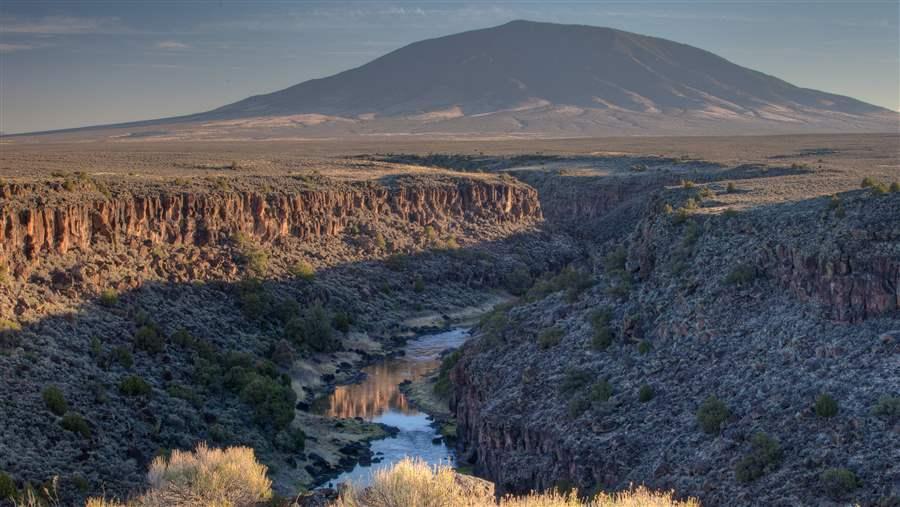
The Río Grande del Norte National Monument not only preserves an iconic area, but it also ensures that ranching, hunting, and fishing will continue.
BLM New Mexico
This should be an easy question to answer: What should the president do with a parcel of public land that a local community fought long and hard to protect and that preserves classic Western landscapes, Native American culture and history, and critical wildlife habitat? The correct answer is “leave it alone.” But in the case of New Mexico’s Río Grande del Norte National Monument, Interior Secretary Ryan Zinke has recommended that President Donald Trump take a different course, one that could open the area to extractive energy development and threaten the economic growth the monument designation has brought to surrounding towns.
Former President Barack Obama designated the 242,555-acre monument on March 25, 2013, at the urging of sportsmen, small business owners, tribal leaders, ranchers and grazing permittees, veterans, and conservationists, all of whom saw benefit in protecting the land. Three months before the designation, the Taos Pueblo governor and war chief passed a resolution supporting permanent protection of the area due to its sacred cultural sites and ruins, and for its scenic, environmental, and economic value.
An economic success story
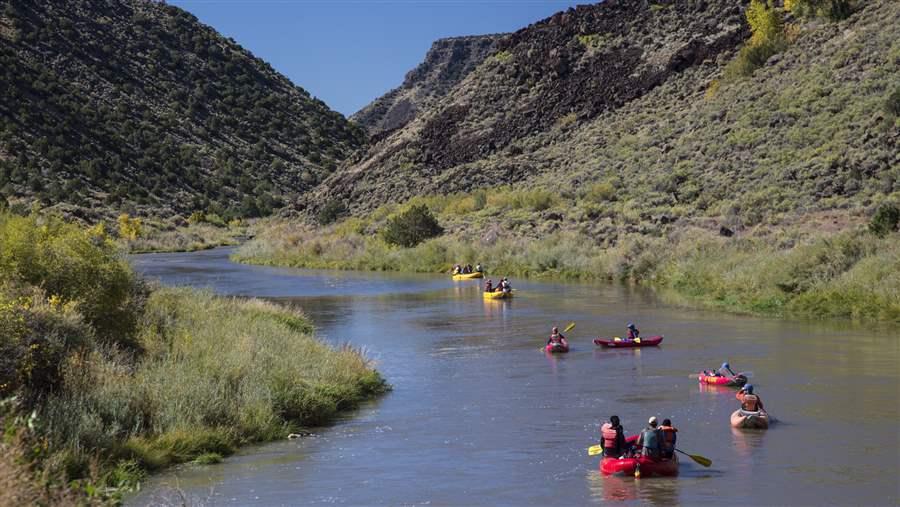
The Outdoor Industry Association found that outdoor recreation drives a $9.9 million economy and supports 99,000 jobs in the Land of Enchantment every year.
BLM New Mexico
The ensuing five years have proven those groups right: In just the first year after the designation, visitation to the area jumped 40 percent, spurring a 21 percent increase in lodgers’ tax revenue for the town of Taos, and a rise of more than 8 percent in gross lodging and dining receipts in Taos County, according to the New Mexico Green Chamber of Commerce. Today, the town of Taos and New Mexico’s tourism department promote the national monument and feature it in their official visitors guides. Those results are in line with research that consistently shows that rural communities near protected public lands fare better than those that are not.
Cultural and natural value on display
Travelers to the area marvel at the 800-foot gorge that dives into the Rio Grande, the petroglyphs and other Native American history carved into the canyon walls, and the many species of birds that use the national monument as a migratory corridor.
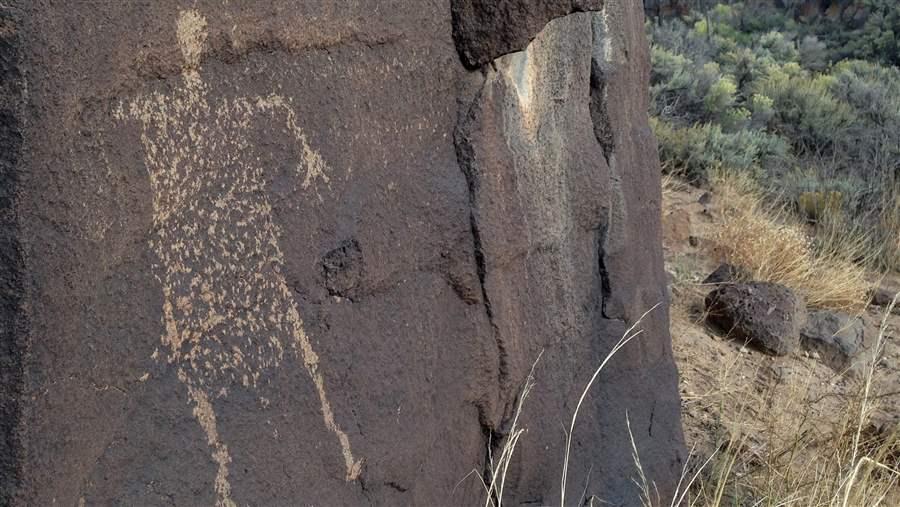
Petroglyphs, like this one, are found in numerous places in the Rio Grande del Norte National Monument, which allows traditional Native American uses of the area, such as hunting, fishing, and firewood and herb gathering to continue.
Stuart Wilde
The Río Grande del Norte National Monument contains critical and diverse habitat that is essential to wildlife connectivity in northern New Mexico and central Colorado. It rests along one of the world’s great avian migratory routes, and provides a stopover for eagles, hawks, and falcons. The monument also safeguards habitat for bears, elk, bighorn sheep, and other mammals, and the namesake river that cuts through the monument is home to Rio Grande cutthroat trout and river otters.
Local support yesterday and today
When Obama designated the monument, Taylor Streit, a fly-fishing guide in Taos, said, “The Río Grande del Norte is my favorite place in the world to fish, and the higher slopes of the Rio Grande watershed have fed my family with deer, antelope, and elk. It’s as wild and free as it gets. Designating Río Grande del Norte as a national monument will help keep it as a legacy for those who follow us.” The monument has not affected access for ranching, hunting, fishing, or other traditional uses.
Last year, when Trump directed Zinke to review 27 national monuments, New Mexico residents submitted more than 100,000 comments in favor of leaving protections for Río Grande del Norte intact. In fact, 99 percent of the roughly 3 million comments the administration received supported leaving the monuments alone.
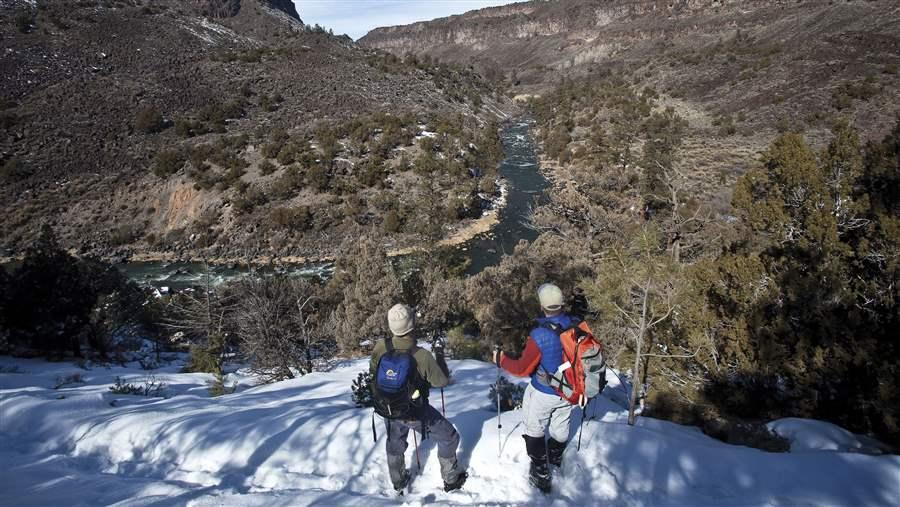
Hikers take in a view of the Rio Grande. Of the comments submitted into the Department of the Interior that specifically mentioned Río Grande del Norte during the national monument review, 98 percent requested that the monument not be altered.
BLM New Mexico
How you can help
Zinke recommended amending the Río Grande del Norte National Monument proclamation to prioritize “public access; infrastructure upgrades, repair, and maintenance; traditional use; tribal cultural use; and hunting and fishing rights.”
But the monument already ensures access, and allows ranching, hunting, fishing, and Native American traditional uses. Amending the proclamation could open Río Grande del Norte to energy development and delivery, ranching in areas where it has not previously existed, and other uses that could change the nature and character of this this spectacular, sacred, and economically valuable area.
John Gilroy directs The Pew Charitable Trusts’ U.S. public lands program.


America’s Overdose Crisis
Sign up for our five-email course explaining the overdose crisis in America, the state of treatment access, and ways to improve care
Sign up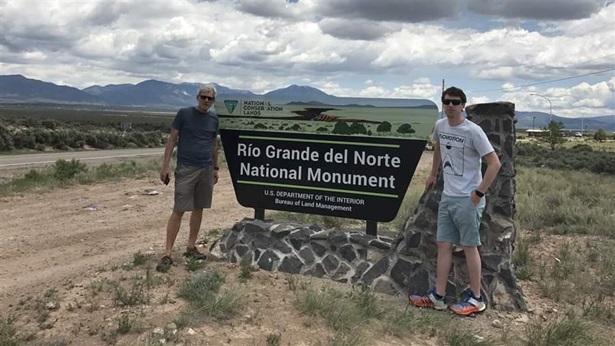
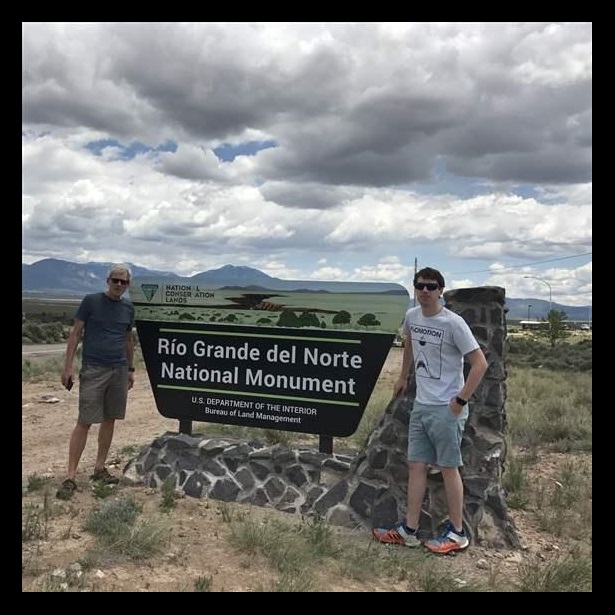
National Monuments Protect America’s Heritage—and Economy
Critical history and outdoor recreation revenue at stake in review of 27 sites










